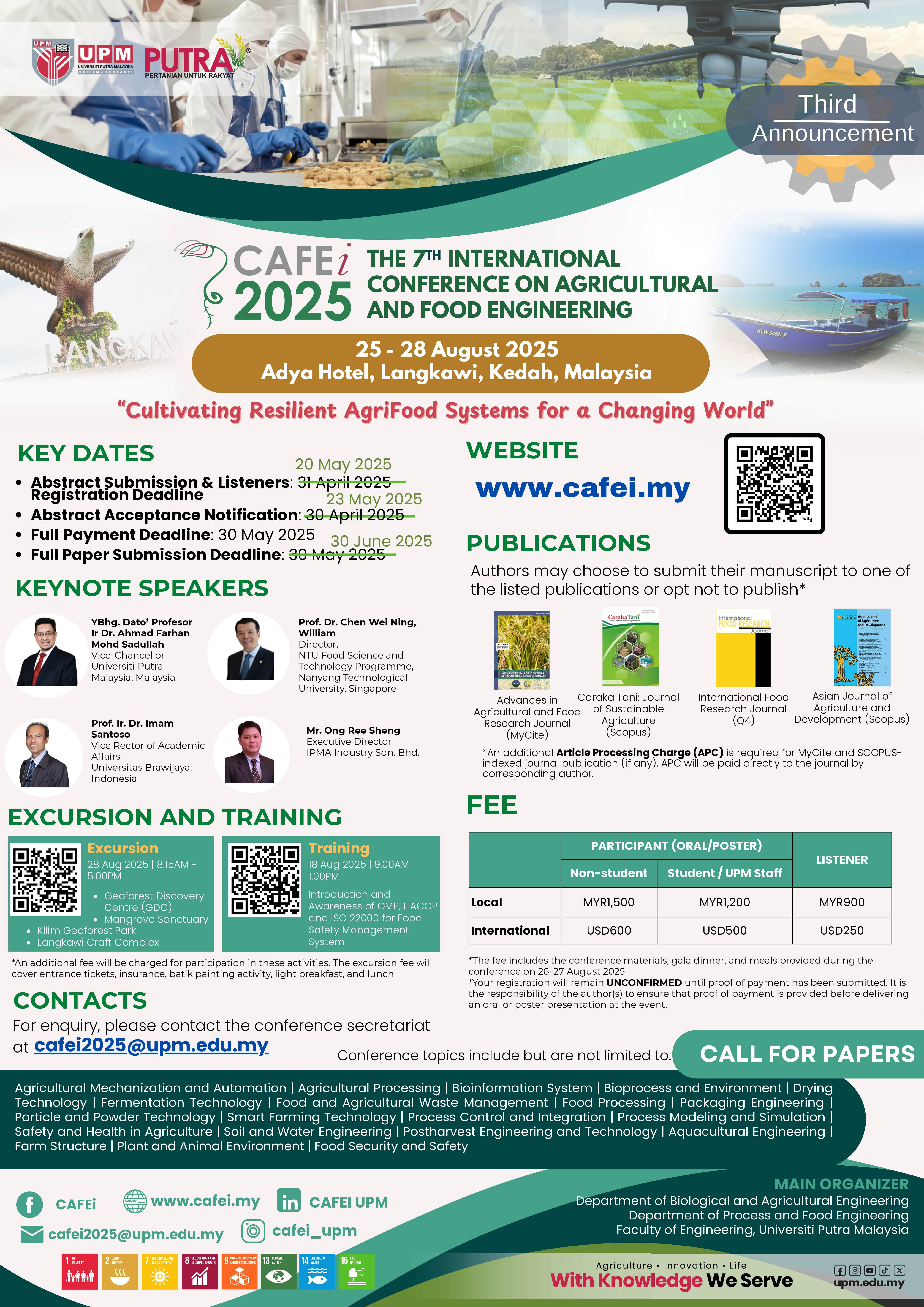Reliability of Finite Element Analysis to Determine the Mechanical Responses in Fruits and Root-Vegetables
DOI:
https://doi.org/10.36877/aafrj.a0000205Abstract
Fresh agricultural products are very susceptible to physical damage resulted from the mechanical impact during post-harvest operations such as packaging, storing and transporting. Defects produce are prone to cellular damage that can then serve as infection sites for numerous wound pathogens that result in much of the postharvest diseases This paper reviewed the applicability of finite element modelling (FEM) for predicting the damage in fruits and root vegetables (FV) during the condition of static and dynamic loadings. However, many unresolved issues that need to be addressed to improve the finite element (FE) models. This work aims to provide readers with background information regarding the current state of FEM in predicting the mechanical damage in FV. A brief description of the relation between the reverse engineering approach, mechanical tests and FE method is discussed. The improvements to experimental validation techniques which allow for better-calibrated models are also explained. This article presents the recent developments in FEM, highlighting the applications and its contributions to the agricultural field as well as identifying open issues where extensive research is needed.
Downloads
Published
How to Cite
Issue
Section
License
Copyright (c) 2021 Nurazwin Zulkifli, Asst. Prof. Ts. Dr, Dr., Dr., Dr., Dr.

This work is licensed under a Creative Commons Attribution-NonCommercial 4.0 International License.
Author(s) shall retain the copyright of their work and grant the Journal/Publisher right for the first publication with the work simultaneously licensed under:
Creative Commons Attribution-NonCommercial 4.0 International (CC BY-NC 4.0). This license allows for the copying, distribution and transmission of the work, provided the correct attribution of the original creator is stated. Adaptation and remixing are also permitted.

This broad license intends to facilitate free access to, as well as the unrestricted reuse of, original works of all types for non-commercial purposes.
The author(s) permits HH Publisher to publish this article that has not been submitted elsewhere.

.png)

.jpg)



